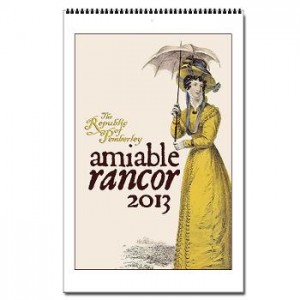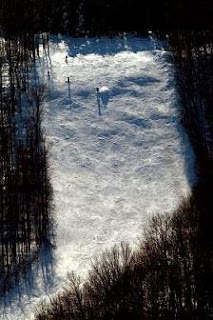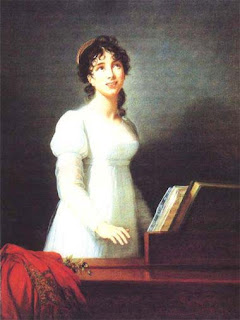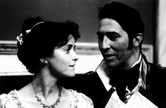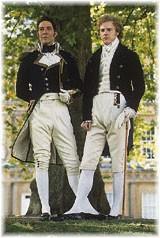I hope I won’t be drummed out of the Risky Regencies for this, but I have to confess it took me a while to warm to Jane Austen.
My introduction to the Regency wasn’t Jane Austen, but Georgette Heyer and the stacks and stacks of Regency romances by other authors lying around our house. I read them voraciously as a child, getting in trouble with the nuns at my elementary school for having one in my book-bag.
I think I was about twelve when, having read enough book blurbs that said, “in the tradition of Jane Austen”, I decided to pick up Pride and Prejudice. And embarrassing as it is to admit, I found it slow going. At the time, I was a lonely, nerdy kid and I craved the escape of fantasy, preferring the Chronicles of Narnia to realistic fiction like Beverly Cleary’s Ramona books (even though I now recognize how wonderful they are). The same thing happened with Jane Austen, since she wrote realistic contemporary fiction, using events and settings (“three of four families in a country village”) that seemed less glamorous than the glittering ton parties, duels and adventures I found in Regencies by Georgette Heyer and other authors.
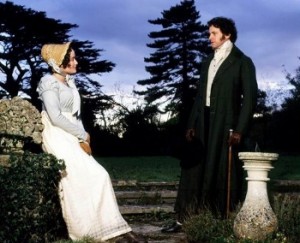 As I’ve gotten older and possibly a bit wiser, I’ve come to know that reality can be as powerful, maybe more so—than fantasy. I recognize the brilliance of Jane Austen’s characterizations and the skill with which she crafted her stories on “the little bit (two inches wide) of ivory on which I work with so fine a brush.” I’ve come to love her portrayal of her times and I know this has affected my own writing. I enjoy rural settings very much and I don’t feel the need for all my heroes and heroines to be aristocrats.
As I’ve gotten older and possibly a bit wiser, I’ve come to know that reality can be as powerful, maybe more so—than fantasy. I recognize the brilliance of Jane Austen’s characterizations and the skill with which she crafted her stories on “the little bit (two inches wide) of ivory on which I work with so fine a brush.” I’ve come to love her portrayal of her times and I know this has affected my own writing. I enjoy rural settings very much and I don’t feel the need for all my heroes and heroines to be aristocrats.
My own daughters are learning to appreciate Jane Austen at an earlier age. We’ve read the books together, but seeing the movies does help. I didn’t see any of the Jane Austen adaptations that were available when I was growing up, which is probably just as well, as I’ve been disappointed in the 70s versions I’ve seen. But any of the more recent productions, like the 1995 Colin Firth/Jennifer Ehle P&P would have provided enough visual beauty—the costumes, the settings—to satisfy my craving for fantasy. I’m sure I would have read the book with different eyes.
So how do you see Jane Austen—as the realistic fiction, as fantasy, or something else? Can you forgive me my youthful foolishness in not recognizing her brilliance on first reading? Comment for the chance to win this “Amiable Rancor” calendar from The Republic of Pemberley.
P.S. Lesley Attary, you have won an e-copy of The Persistent Earl by Gail Eastwood. Gail Eastwood will be in touch.

